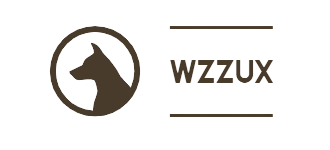The Australian Cattle Dog, also known simply as the Cattle Dog, is a remarkable herding breed developed in Australia. With its strong work ethic, intelligence, and adaptability, this dog has become a valuable asset for cattle farmers across the globe.
History
The Australian Cattle Dog’s history is well-documented, making it a fascinating breed to explore. In the early 19th century, Australia’s expanding cattle industry faced challenges. The wild and unruly cattle required skilled herding dogs. Enter the Australian Cattle Dog, a result of strategic crossbreeding.
- Smithfields and Dingos: Initially, Smithfield dogs were used for herding, but they struggled with the harsh Australian conditions. To address this, breeders crossed them with dingos, the native Australian dogs. The resulting dogs were hardier and better suited to the climate.
- Highland Collies: Another breeder imported Highland Collies from Scotland. These blue-coated dogs were excellent workers but tended to bark excessively. By crossing them with the previous dingo-influenced line, a quieter, efficient herding dog emerged.
Physical Characteristics
- Size: Males stand 46-51 cm (18-20 inches) at the shoulder, while females are slightly smaller at 43-48 cm (17-19 inches).
- Weight: Australian Cattle Dogs typically weigh between 15-22 kg (33-49 lbs).
- Coat: Their double-layered coat features a short, dense undercoat and a smooth, weather-resistant outer layer.
- Head: The skull is broad and flat, with a well-defined stop. The strong muzzle houses a black nose.
- Eyes: Medium-sized, oval-shaped eyes in dark brown.
- Ears: Erect, almost pointed, and set high on the head.
- Tail: Reaches the hock joint and hangs down or remains horizontal.
The Australian Cattle Dog comes in two primary coat colors: blue and red speckle. Let’s explore each:
- Blue: The iconic blue Australian Cattle Dog has a coat ranging from light blue to deep slate. It often exhibits a mottled or speckled pattern with black, blue, and white hairs12.
- Red Speckle: These dogs have a solid red base color (genetically fawn/sable) with intermingled white hairs, creating the speckled appearance. They’re often referred to as “red heelers” due to their coat color1.
Remember, these coat colors are integral to the breed type and contribute to the Australian Cattle Dog’s unique appearance! 🐾
Temperament and Utility
- Loyalty and Protection: Australian Cattle Dogs are fiercely loyal and protective, making them excellent guardians for livestock and property.
- Silent Workers: Unlike their noisy predecessors, these dogs work silently, herding cattle efficiently.
- Adaptability: They thrive in various living conditions and climates.
Grooming an Australian Cattle Dog (also known as a Queensland Heeler) is essential for their well-being. Here are eight great tips to keep your Cattle Dog looking and feeling their best:
- Brushing: Regular brushing is crucial. Use a quality de-shedding brush to keep their coat clean and reduce shedding.
- Bathing: You don’t need to bathe them frequently—usually only if their coat gets dirty or if they require a flea bath.
- Dental Hygiene: Regularly check their teeth and gums. Dental health is important for overall well-being.
- Ear Cleaning: Inspect their ears weekly for any signs of redness or infection. Clean gently if needed.
- Fur Trimming: Trim any excess fur around their paws and ears to maintain a neat appearance.
- Nail Clipping: Keep their nails trimmed at a comfortable length to prevent overgrowth.
- Shedding Management: Manage seasonal shedding by increasing brushing frequency during shedding periods.
- Reward for Good Behavior: Make grooming a positive experience. Patience and calm surroundings are key.
Remember, a well-groomed Australian Cattle Dog is a happy and healthy companion! 🐾
Let’s dive into training needs and common health issues for Australian Cattle Dogs:
Training Needs:
- Early Socialization: Start socializing your Cattle Dog puppy early. Expose them to various people, animals, and environments to build confidence.
- Consistent Commands: These dogs respond well to consistent training. Use positive reinforcement techniques like treats and praise.
- Mental Stimulation: Cattle Dogs are intelligent and need mental challenges. Puzzle toys, agility training, and obedience exercises keep their minds engaged.
- Physical Exercise: Regular exercise is crucial. Long walks, runs, and playtime help prevent boredom and behavioral issues.
- Herding Instincts: Channel their herding instincts constructively. Teach them basic herding commands.
Australian Cattle Dogs are intelligent and energetic, making training both fun and rewarding. Here’s a step-by-step guide:
- Basic Obedience: Teach commands like sit, stay, heel, and come using positive reinforcement (treats and praise).
- Socialization: Regular interactions with people, animals, and environments are crucial.
- Herding Instinct: Redirect playful herding behaviors using toys and games.
- Exercise: Engage them in activities like fetch, agility, and long walks.
- Advanced Training: Explore agility, scent tracking, and tricks.
- Consistency: Set clear boundaries and maintain consistent training.
- Behavioral Issues: Address issues like barking or anxiety promptly.
- Continued Learning: Keep challenging them mentally as they grow12.
Remember, positive reinforcement works best with Australian Cattle Dogs! 🐾
Common Health Issues:
- Hip Dysplasia: A genetic condition where the hip joint doesn’t develop properly. Regular vet checkups and maintaining a healthy weight are essential.
- Progressive Retinal Atrophy (PRA): A degenerative eye disease leading to blindness. Regular eye exams are crucial.
- Deafness: Some Cattle Dogs are prone to congenital deafness. Early detection helps manage communication.
- Elbow Dysplasia: Similar to hip dysplasia but affecting the elbow joint. Proper nutrition and exercise can reduce the risk.
- Blue Dog Dermatitis: An allergic reaction to flea bites. Regular flea prevention is vital.
Remember, a well-trained and healthy Australian Cattle Dog can be a loyal and devoted companion! 🐶
Conclusion
The Australian Cattle Dog’s blend of history, adaptability, and work ethic makes it a remarkable breed. Whether on vast Australian plains or in modern homes, these dogs continue to excel as reliable companions and skilled herders. 🐾

